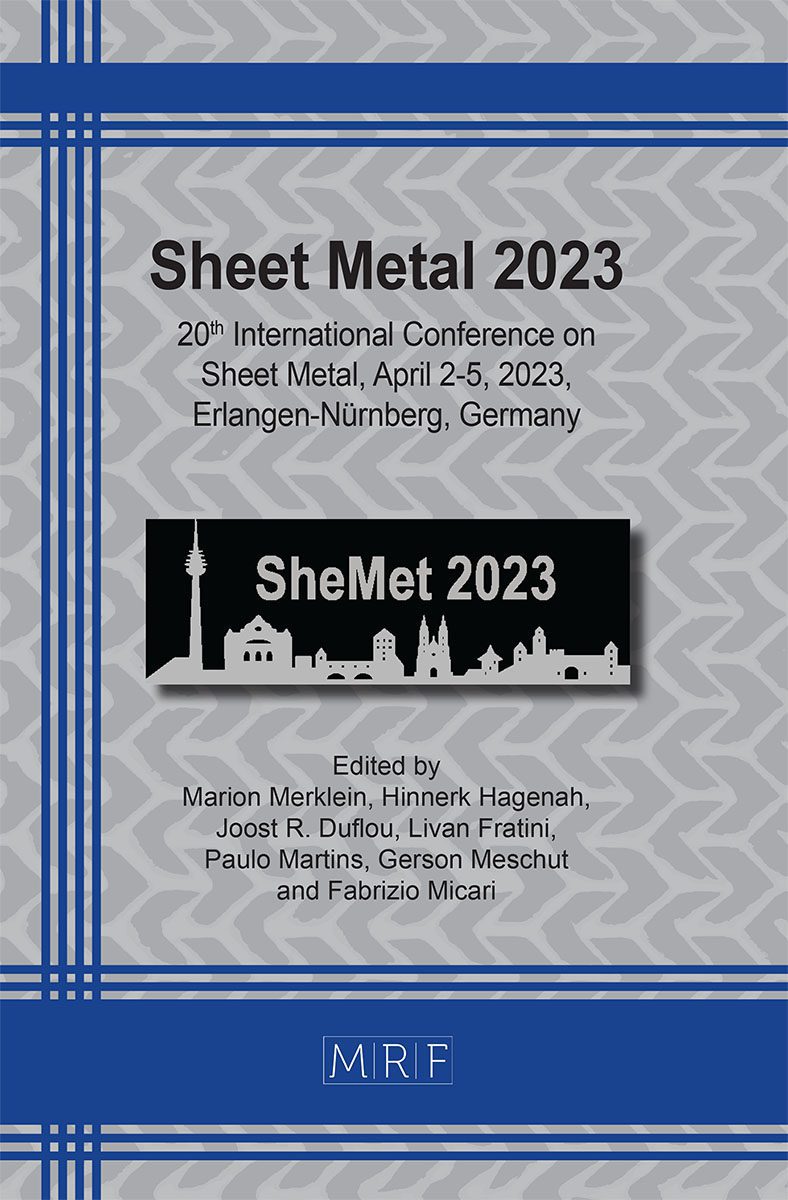Computer vision for industrial defect detection
Johannes Landgraf, Moritz Kompenhans, Tassilo Christ, Theresa Roland, Adrian Heinig
download PDFAbstract. Despite the continuous progress in computer vision, its application to many industrial tasks like the detection and size measurement of non-trivial defects is still a demanding problem. In this paper, typical challenges, workflows, and key performance indicators are discussed and the application of AI-based Semantic Image Segmentation methods is demonstrated to the detection of minute damages on metal surfaces using the d-fine vision toolbox. A performance improvement for a public data set above prior results is reported and the successful transfer of the approach to real-world sheet metal parts produced by voestalpine Automotive Components Schmölln GmbH is shown.
Keywords
Artificial Intelligence, Visual Inspection, Defect Detection
Published online 3/17/2023, 8 pages
Copyright © 2023 by the author(s)
Published under license by Materials Research Forum LLC., Millersville PA, USA
Citation: Johannes Landgraf, Moritz Kompenhans, Tassilo Christ, Theresa Roland, Adrian Heinig, Computer vision for industrial defect detection, Materials Research Proceedings, Vol. 25, pp 371-378, 2023
DOI: https://doi.org/10.21741/9781644902417-46
The article was published as article 46 of the book Sheet Metal 2023
![]() Content from this work may be used under the terms of the Creative Commons Attribution 3.0 licence. Any further distribution of this work must maintain attribution to the author(s) and the title of the work, journal citation and DOI.
Content from this work may be used under the terms of the Creative Commons Attribution 3.0 licence. Any further distribution of this work must maintain attribution to the author(s) and the title of the work, journal citation and DOI.
References
[1] B. Vogel-Heuser, T. Bauernhansl, M. ten Hompel, eds., Handbuch Industrie 4.0 Bd.4, Allgemeine Grundlagen., Springer, 2017. https://doi.org/10.1007/978-3-662-53254-6
[2] Y. Lecun, Y. Bengio, Convolutional networks for images, speech, and time-series, in: M.A. Arbib (Ed.), The Handbook of Brain Theory and Neural Networks, MIT Press, 1995.
[3] C. Shorten, T.M. Khoshgoftaar, A survey on Image Data Augmentation for Deep Learning, J. Big Data. 6 (2019) 60. https://doi.org/10.1186/s40537-019-0197-0
[4] I. Goodfellow, Y. Bengio, A. Courville, Deep learning, MIT press, Cambridge, MA, USA, 2016.
[5] S. Mojtaba Marvasti-Zadeh, L. Cheng, H. Ghanei-Yakhdan, S. Kasaei, Deep Learning for Visual Tracking: A Comprehensive Survey, ArXiv E-Prints. (2019) earXiv:1912.00535.
[6] J. Redmon, S. Divvala, R. Girshick, A. Farhadi, You Only Look Once: Unified, Real-Time Object Detection, ArXiv E-Prints. (2015) earXiv:1506.02640. https://doi.org/10.1109/CVPR.2016.91
[7] Q. Bateux, E. Marchand, J. Leitner, F. Chaumette, P. Corke, Visual Servoing from Deep Neural Networks, ArXiv E-Prints. (2017) earXiv:1705.08940.
[8] S.-H. Huang, Y.-C. Pan, Automated visual inspection in the semiconductor industry: A survey, Computers in Industry. 66 (2015) 1–10. https://doi.org/10.1016/j.compind.2014.10.006
[9] M. Ferguson, R. Ak, Y.-T.T. Lee, K.H. Law, Detection and Segmentation of Manufacturing Defects with Convolutional Neural Networks and Transfer Learning, ArXiv E-Prints. (2018) earXiv:1808.02518. https://doi.org/10.1520/SSMS20180033
[10] D. Einarson, D. Mengistu, Deep Learning Approaches for Crack Detection in Bridge Concrete Structures, in: 2022 International Conference on Electronic Systems and Intelligent Computing (ICESIC), 2022: pp. 7–12. https://doi.org/10.1109/ICESIC53714.2022.9783576
[11] D. Martin, S. Heinzel, J. Kunze von Bischhoffshausen, N. Kühl, Deep Learning Strategies for Industrial Surface Defect Detection Systems, ArXiv E-Prints. (2021) earXiv:2109.11304. https://doi.org/10.24251/HICSS.2022.146
[12] O. Ronneberger, P. Fischer, T. Brox, U-Net: Convolutional Networks for Biomedical Image Segmentation, ArXiv E-Prints. (2015) earXiv:1505.04597. https://doi.org/10.1007/978-3-319-24574-4_28
[13] Y. Huang, C. Qiu, Y. Guo, X. Wang, K. Yuan, Surface Defect Saliency of Magnetic Tile, in: 2018 IEEE 14th International Conference on Automation Science and Engineering (CASE), 2018: pp. 612–617. https://doi.org/10.1109/COASE.2018.8560423
[14] J. Yosinski, J. Clune, Y. Bengio, H. Lipson, How transferable are features in deep neural networks?, ArXiv E-Prints. (2014) earXiv:1411.1792.
[15] T.-Y. Lin, P. Goyal, R. Girshick, K. He, P. Dollár, Focal Loss for Dense Object Detection, ArXiv E-Prints. (2017) earXiv:1708.02002. https://doi.org/10.1109/ICCV.2017.324
[16] A. Shrivastava, A. Gupta, R. Girshick, Training Region-based Object Detectors with Online Hard Example Mining, ArXiv E-Prints. (2016) earXiv:1604.03540. https://doi.org/10.1109/CVPR.2016.89
[17] T.T. Tanimoto, An Elementary Mathematical Theory of Classification and Prediction, International Business Machines Corporation, 1958.
[18] T. Schlagenhauf, M. Landwehr, J. Fleischer, Industrial Machine Tool Element Surface Defect Dataset, 2021. https://doi.org/10.1016/j.dib.2021.107643
[19] A. Haberkern, Leistungsfähige Kugelgewindetriebe durch Beschichtung, Universität Karlsruhe, Institut für Werkzeugmaschinen und Betriebstechnik, 1998
[20] T. Schlagenhauf, M. Landwehr, Industrial machine tool component surface defect dataset, Data in Brief. 39 (2021) 107643. https://doi.org/10.1016/j.dib.2021.107643
[21] S.D. Nguyen, T. Son, T. Van Phuc, H. Lee, M. Piran, V.P. Le, Deep Learning-Based Crack Detection: A Survey, International Journal of Pavement Research and Technology. (2022). https://doi.org/10.1007/s42947-022-00172-z































